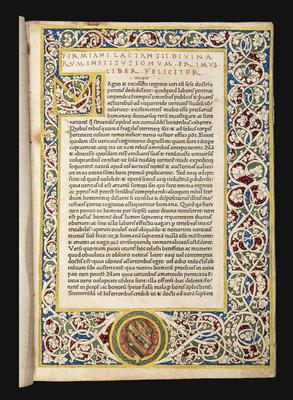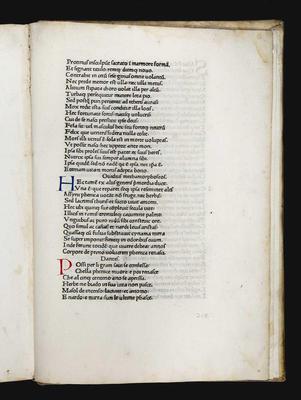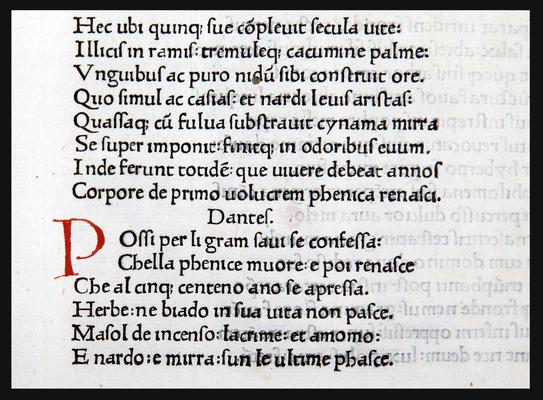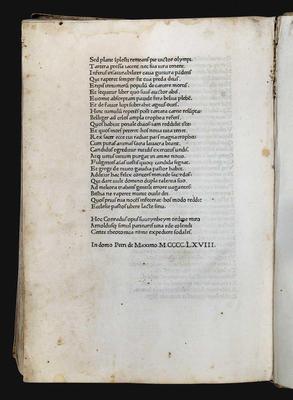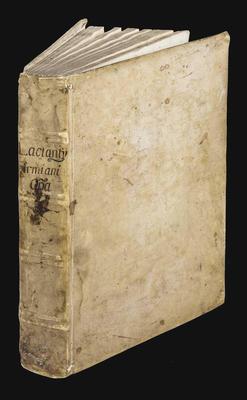Lucius Caecilius Firmianus Lactantius
Opera.
Rome, Conradus Sweynheym and Arnoldus Pannartz, 1468.Median folio (321x220 mm). Collation: [*12, a-l10, m8, n-q10, r12, s-v10, x8]. [218] of [220] leaves, lacking the first and last blanks. Text in one column, 38 lines. Type: 115R. On fol.[a]1r white vinestem full-border on green, blue and crimson ground within a gold burnished frame, including a seven-line illuminated initial ‘M' in gold, by a contemporary Roman artist; in the bas-de-page unidentified arms within a green laurel wreath (three green bends on a gilt shield). Nine seven-line illuminated initials in text, on similar white vinestem ground with marginal extensions. Numerous painted initials alternately in red and blue. Chapter headings supplied in red ink. Late sixteenth-century vellum, over pasteboards. Smooth spine, with inked title. A very fine widemargined copy; paper flaw on fol. [*]11; small wormholes in the preliminary leaves, with the occasional loss of a few single letters; fols. [q]2-[q]5 somewhat stained. On the front pastedown and flyleaves eighteenth-century annotations on Lactantius' life and works, in Latin and Italian.
Provenance: contemporary coat of arms painted on fol. a1r, similar to that used by the Fieschi family of Genoa,or the Carpegnas; Livio Ambrogio collection.
The earliest appearance of Dante in print, two terzine from the Inferno included for the first time in the extremely rare first Roman edition of Lactantius, from the second press of Conradus Sweynheym and Arnoldus Pannartz.
The two German clerics had worked for Gutenberg in Mainz and introduced printing into Italy, in their first press in Subiaco, established in 1465. The 1468 Lactantius is nearly as rare as the first edition printed in Subiaco on 29 October 1465, and is one of the first books produced by Sweynheym and Pannartz after their move to Rome in 1467, where they set up their new press in domo Petri de Maximo as stated in the colophon, in the house of Pietro de' Massimi near Piazza Navona.
In the last quire of this masterpiece of early typography the text of De Phoenice carmen, taken from Ovid's Metamorphoses, was printed for the first time (the carmen had not been included in the Subiaco edition), including two terzine from the Inferno about the mythical Phoenix (Inferno,xxiv106-111). This is the first appearance in print of verses from the Commedia, the entire text of which would be published just four years later in 1472. The exquisite white vinestem decoration in the present copy is in a style popular in manuscripts and incunabula produced in Rome in the late 1460s, and would thus appear to have been executed by a Roman artist, possibly working in the same atelier that often collaborated with Sweynheym and Pannartz. Owing to a mistake which occurred during the decoration of this copy the artist has painted in red a capital letter ‘P' in place of the correct initial ‘C' of the word ‘Cossi' which opens the first terzina cited.


